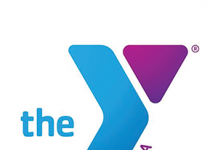
For as often as it’s in the news, Flint, Mich., is a small town, and the people in it are used to being ignored and overlooked. There have been those headlines, of course, that would occasionally spring up: “Most Dangerous City,” “Murdertown USA.” Flint would surface to the top of the news cycle, a few reporters from out of town would mention Michael Moore’s Roger & Me, and Flint would continue being Flint, a post-industrial city that spends much of its time trying to move on to whatever’s next.
Then, in the fall of 2015, that all changed.
The city is still trying to figure out what’s next, but with another huge obstacle — a lead-tainted water supply. Flint still has not overcome a decision by a state-appointed emergency manager to switch the city’s water supply from Detroit to the Flint River — a decision that was followed by failure at every level of government until lead began leaching into the water.
Since then, the entire city has been forced to drink — and sometimes bathe — in bottled water.
This time, at least for a while, the headlines stuck around, and Flint went from being an overlooked city to one that the country — and the rest of the world — wanted to help.
A ‘Magnificent’ Response
Kathi Horton’s job is usually pretty straightforward. She’s the president of the Community Foundation of Greater Flint, which works with people to establish philanthropic foundations with their estates. But in the wake of the Flint water crisis, her job — and the role of the community foundation — changed drastically. Suddenly, everyone wanted to give them money.
“This is new territory,” she says. “I don’t think we had any clue that the response would be as magnificent as it is.”
The Community Foundation of Greater Flint, along with the United Way of Genesee County, have become the two main destinations for donations, which then are dispersed to various efforts and nonprofits throughout the city.
Horton says there have been at least 16,000 donors, resulting in nearly $10 million in donations so far. Jamie Gaskin, CEO of the United Way of Genesee County, says they’ve had at least 15,000 individual donors, but added that it is likely more. So far they’ve raised about $3.4 million. It’s getting hard to keep up with it all.
“It’s just (been) thousands of people with the outpouring,” Gaskin says.
And those donations are coming from everywhere. From Flint, from Detroit, from all over the country — even from foreign countries.
Horton says the donations came in waves.
The first wave consisted of individuals from across the country. The ability to donate online created an easy opportunity for people to give.
The next wave was large companies and organizations. The last wave was kids.
Horton and Gaskin both say that classrooms from across the country have been donating whatever they can. Sometimes it’s a penny drive. Other times it’s a bake sale, or collecting cans. Then they get online and donate the money.
“A lot of times they were studying third-world countries and water … and the teachers said, ‘look, this isn’t just an issue in third-world countries, this is happening in our own country,’ ” Horton says.
Two children who were having birthdays told their parents that instead of presents at their parties, they wanted their friends to write a check.
Then they sent that money to Flint.
Gaskin says they’ve even had prison inmates taking collections and sending money.
Since the water crisis, the donors of the Community Foundation of Greater Flint have set up seven charitable funds to date, as well as a website for their largest foundation, flintkids.org, where people can donate money. The United Way of Genesee County started flintcares.com, a community resource where residents can get information regarding the crisis — where to get water or filters, how to take care of their skin, what to do for their pets, and more.
The goal for the foundations and programs that have been set up is to look at the crisis in the long term, helping, in particular, children who have been affected and who could need help for years or even decades to come.
“There are going to be long-lasting impacts on this for children,” Horton says. “It made me a true believer that it’s not midnight in America. It’s morning in America.
“Americans still respond so magnificently.”
The Doctor
 Dr. Mona Hanna-Attisha — known now throughout the country as simply Dr. Mona — is perhaps more responsible than anyone for getting the word out on the depth of the problems in Flint. She’s a pediatrician with Hurley Medical Center, located in Flint, and at the urging of a friend decided to study blood samples from children over time since the start of the crisis.
Dr. Mona Hanna-Attisha — known now throughout the country as simply Dr. Mona — is perhaps more responsible than anyone for getting the word out on the depth of the problems in Flint. She’s a pediatrician with Hurley Medical Center, located in Flint, and at the urging of a friend decided to study blood samples from children over time since the start of the crisis.
What she found was alarming — elevated lead levels in their blood.
Without her, the world might never have known that people, including children with their fragile and developing brains, were drinking a neurotoxin.
And without her, the response from the country might not be what it is. The state initially blew off her research, but she stood her ground until state officials apologized and took action.
She says she knew early on that government alone wouldn’t solve the problems and that philanthropy would play a crucial role in overcoming the water crisis.
That’s why she was one of the first people to sit down with the Community Foundation of Greater Flint, along with several other business leaders, to talk about what needed to be done. Hanna-Attisha made the initial gift to start the Flint Child Health and Development Fund (more commonly known as the Flint Kids fund).
Of the seven foundations established by the CFGF, it’s by far the largest, receiving nearly $8 million of the $10 million that the CFGF has raised so far.
Part of the reason so much money has come in isn’t just because Dr. Hanna-Attisha started the fund, but because she’s been telling anyone who will listen about it.
At one point she was doing as many as 14 interviews a day with various media outlets in an effort to “flip the story,” as she puts it. She has become the face of the water crisis relief efforts. Her picture is on buses in Flint. She’s been on major television networks and in the country’s largest newspapers. And it’s paying off for Flint.
Whenever something is in the news about the water crisis, Horton says, she comes into the office to find that there have been a few more additional donations overnight.
Hanna-Attisha’s biggest concern is making sure that she and others are able to continue combatting the effects of the crisis for decades to come. That’s the whole idea behind the Flint Kids fund.
“The role of philanthropy has been incredible,” Hanna-Attisha says.
Detroit Steps Up
One of the most impressive moments Horton remembers was a morning when she was sitting in a room with the Southeastern Bank Consortium.
Here they were — these Detroit-area businessmen, fierce competitors from the area’s largest banks — and all they wanted to know was how they could help, together.
It was one example, she says, of how much the Detroit area, both its businesses and its residents, have stepped up to help Flint.
“One of the biggest surprises was how deeply the people of Detroit connected with this,” she says.
WDIV TV 4 hosted a telethon. The Winter Blast Festival donated its proceeds to Flint. The Detroit Chamber of Commerce held a leadership initiative related to the fund at the Mackinaw Policy Conference and generated further donations.
Art Van Furniture Inc. donated space to run the telethon. The Delphi Foundation donated, as did the Detroit and Hamtramck Muslim communities, the Detroit Medical Center Foundation, the United Auto Workers Union, and General Motors — the list goes on, full of businesses and organizations that otherwise look like they’d have nothing to do with one another.
The biggest Detroit donor by far, however, is Tom Gores, owner of the Detroit Pistons and a Flint native. He’s committed $25 million to Flint (he’s where the biggest chunk of the Flint Kids fund has come from) and has sent members of his business team to the city to help coordinate efforts.
More than Money
In January, Pastor Bobby Jackson met MSNBC’s Rachel Maddow at a town hall meeting in Flint. Jackson runs the Mission of Hope homeless shelter on Flint’s north side — a place hit particularly hard by crime, blight, and other issues.
Mission of Hope was one of many water distribution sites throughout the city. Despite his location in a rough neighborhood, Jackson knew people who would drive across town to him for cases of bottled water.
It was tough to keep it in supply.
Well, until he met Maddow.
Mission of Hope was soon so full of bottled water there was little room for the homeless men and women that stopped in throughout the day for a shower or something to eat. The water filled the living room and offices, sitting on every surface, including chairs and couches. In the basement, the pews of the small sanctuary where Jackson would preach had to be moved to make room for all the cases of water.
He wasn’t alone.
Water came from everywhere, filling pallets in basements and parking lots throughout the city. Some organizers have said that while sending water is nice, what they really need now are dollars. Hanna-Attisha is among those stressing that Flint needs more than bottled water and filters, which are only a temporary fix.
“People want to give something physical,” she says. Still, having water to drink is a necessary part of solving the problem, especially as some reports show that water donations have slowed in recent months.
“People think you can drink the water, and you can’t,” Hanna-Attisha says.
Looking Forward
There is still work to be done.
That’s one of the biggest messages Hanna-Attisha is trying to give people right now — that the water crisis is still ongoing, and that despite all the help that has come Flint’s way, the city’s not out of the woods just yet. In fact, residents won’t be out of the woods for decades, she says, because being exposed to lead as a child can affect you for the rest of your life.
That’s why she wants to make sure Flint is prepared. The Flint Kids fund currently has about $8 million. The goal, in order to keep its programs sustainable, is about $50 million.
That’s a lofty goal, but Hanna-Attisha and others are optimistic.
Horton is excited by a current pledge from the Charles Stewart Mott Foundation, which has pledged to match up to $5 million in donations for the remainder of the year. Horton describes it as a “tremendous opportunity.”
What has been the most pleasant surprise, however, is the fact that the money that has come in so far has been mostly unsolicited.
“I think it’s the combination of ordinary American citizens, that it’s part of their American nature to reach out and help others, and then I’m proud of our corporate American culture,” Horton says. “We didn’t ask them, they just did it. And we’ve only just begun, hopefully.”
|
|
|









